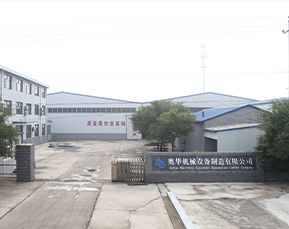 Afrikaans
Afrikaans  Albanian
Albanian  Amharic
Amharic  Arabic
Arabic  Armenian
Armenian  Azerbaijani
Azerbaijani  Basque
Basque  Belarusian
Belarusian  Bengali
Bengali  Bosnian
Bosnian  Bulgarian
Bulgarian  Catalan
Catalan  Cebuano
Cebuano  Corsican
Corsican  Croatian
Croatian  Czech
Czech  Danish
Danish  Dutch
Dutch  English
English  Esperanto
Esperanto  Estonian
Estonian  Finnish
Finnish  French
French  Frisian
Frisian  Galician
Galician  Georgian
Georgian  German
German  Greek
Greek  Gujarati
Gujarati  Haitian Creole
Haitian Creole  hausa
hausa  hawaiian
hawaiian  Hebrew
Hebrew  Hindi
Hindi  Miao
Miao  Hungarian
Hungarian  Icelandic
Icelandic  igbo
igbo  Indonesian
Indonesian  irish
irish  Italian
Italian  Japanese
Japanese  Javanese
Javanese  Kannada
Kannada  kazakh
kazakh  Khmer
Khmer  Rwandese
Rwandese  Korean
Korean  Kurdish
Kurdish  Kyrgyz
Kyrgyz  Lao
Lao  Latin
Latin  Latvian
Latvian  Lithuanian
Lithuanian  Luxembourgish
Luxembourgish  Macedonian
Macedonian  Malgashi
Malgashi  Malay
Malay  Malayalam
Malayalam  Maltese
Maltese  Maori
Maori  Marathi
Marathi  Mongolian
Mongolian  Myanmar
Myanmar  Nepali
Nepali  Norwegian
Norwegian  Norwegian
Norwegian  Occitan
Occitan  Pashto
Pashto  Persian
Persian  Polish
Polish  Portuguese
Portuguese  Punjabi
Punjabi  Romanian
Romanian  Russian
Russian  Samoan
Samoan  Scottish Gaelic
Scottish Gaelic  Serbian
Serbian  Sesotho
Sesotho  Shona
Shona  Sindhi
Sindhi  Sinhala
Sinhala  Slovak
Slovak  Slovenian
Slovenian  Somali
Somali  Spanish
Spanish  Sundanese
Sundanese  Swahili
Swahili  Swedish
Swedish  Tagalog
Tagalog  Tajik
Tajik  Tamil
Tamil  Tatar
Tatar  Telugu
Telugu  Thai
Thai  Turkish
Turkish  Turkmen
Turkmen  Ukrainian
Ukrainian  Urdu
Urdu  Uighur
Uighur  Uzbek
Uzbek  Vietnamese
Vietnamese  Welsh
Welsh  Bantu
Bantu  Yiddish
Yiddish  Yoruba
Yoruba  Zulu
Zulu Basics of Belt and Pulley Drive Systems for Mechanical Engineering Applications
Understanding Belt and Pulley Drives
Belt and pulley drives are fundamental mechanical systems commonly found in various industrial and automotive applications. They utilize belts made of flexible materials to transfer rotary motion between pulleys, making them an efficient means of transmitting power over distances, reducing speeds, or converting motion.
Components and Functionality
The primary components of belt and pulley drives include the belt, pulleys, and sometimes tensioning devices. The pulleys are typically mounted on shafts; one acts as the driver (the source of power), while the other serves as the driven member (the load). Between these two pulleys lies the belt, which is looped around the pulleys, facilitating the transfer of energy.
Types of belts, such as V-belts, flat belts, and timing belts, each cater to specific needs. V-belts, for instance, are designed with a trapezoidal cross-section that fits snugly into the grooves of the pulleys, enhancing friction and allowing higher torque transmission. On the other hand, flat belts are suitable for applications that require high-speed transmission and minimal slippage.
Advantages of Belt and Pulley Drives
One of the main advantages of belt and pulley systems is their ability to accommodate energy transfer smoothly, resulting in low noise levels and minimal wear on components—compared to gear drives, which can generate more vibration and noise. Additionally, these systems are relatively inexpensive to manufacture and maintain.
Belt drives also allow for considerable flexibility in the arrangement of machinery. Since belts can span large distances between pulleys, they enable the separation of drive sources from driven components, which can be a considerable advantage in complex machinery layouts. This can simplify maintenance procedures since belt-driven systems typically require less stringent alignment compared to direct gear drives.
Moreover, belt and pulley drives can effectively absorb shocks and vibrations, which enhances the lifespan of other mechanical components in the system. This shock-absorbing quality makes them an attractive choice in applications with fluctuating loads.
belt and pulley drive

Applications
Belt and pulley drives are ubiquitous in everyday machinery. In automotive applications, they play a crucial role in the operation of accessories such as alternators, water pumps, and air conditioning compressors. The serpentine belt is a typical example of a belt drive that efficiently runs multiple accessories from a single crankshaft pulley.
In industrial settings, these systems are utilized in conveyor systems to transport goods, as well as in machinery like lathes and mills, where they help control the speed and torque delivered to tools. Their adaptability also allows for custom configurations tailored to specific requirements, whether for power transmission in a factory or precise motion control in robotics.
Constraints and Challenges
Despite their advantages, belt and pulley drives do have limitations. One significant drawback is the potential for slippage, particularly in high-torque applications or when the belts are worn out. This can lead to a loss in efficiency and the need for regular maintenance and replacement of belts.
Additionally, belts can be affected by environmental factors such as moisture, heat, and oil, which can compromise their integrity and functionality. Therefore, selecting the right type of belt for specific conditions is crucial for ensuring reliable operation.
Conclusion
Belt and pulley drives remain an essential component in both industrial and automotive sectors due to their efficiency, cost-effectiveness, and flexibility. Understanding their operation, advantages, and inherent challenges is vital for engineers and technicians as they design and maintain systems that rely on this technology. By addressing the limitations and optimizing the design and material selection, users can maximize the benefits of belt and pulley systems, ensuring long-lasting and efficient performance in diverse applications.
-
Revolutionizing Conveyor Reliability with Advanced Rubber Lagging PulleysNewsJul.22,2025
-
Powering Precision and Durability with Expert Manufacturers of Conveyor ComponentsNewsJul.22,2025
-
Optimizing Conveyor Systems with Advanced Conveyor AccessoriesNewsJul.22,2025
-
Maximize Conveyor Efficiency with Quality Conveyor Idler PulleysNewsJul.22,2025
-
Future-Proof Your Conveyor System with High-Performance Polyurethane RollerNewsJul.22,2025
-
Driving Efficiency Forward with Quality Idlers and RollersNewsJul.22,2025





























